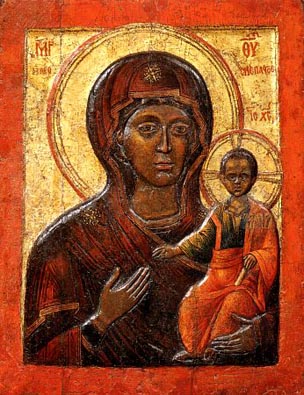
The Blakhernai Icon of the Mother of God
Commemorated on July 7, July 2 and on the Saturday Akathist – on the Fifth Week of Great Lent
The Blakhernai
Icon of the Mother of God was discovered at Jerusalem by the empress
Eudokia during the time of Sainted Juvenal, Patriarch of Jerusalem (Comm.
2 July), and the Monk Euthymios the Great (Comm. 20 January). The holy
icon was sent to Constantinople, where the empress Pulcheria set it within the
Blakernai Church, there where was preserved the Venerable Robe of the Mother of
God (celebrated 2 July).
This holy icon is
also called the "Hodegetria", that is, "Putevoditel'nitsa"
or "Way‑Guide". And in particular it was with this icon that
Patriarch Sergios (610-631) made the rounds of the walls of Constantinople in
the year 626 with moliebens during a siege of the capital by the Avars. In
memory of this and other victories, gained thanks to the intercession of the
Most Holy Virgin, there was established annually on Saturday of the Fifth Week
of Great Lent to celebrate a feast of Praise to the Most Holy Mother of God
("Saturday Akathist"). At first the celebration was done only at the
Blakhernai temple at Constantinople. In the IX Century the feast was included
in the ustav (rule) of the Monk Sava the Sanctified and in the Studite ustav,
but later was included in the Lenten Triodion and made universal for all the
Orthodox Church.

After the fall of
Constantinople in 1453, the Blakhernai Icon was transferred to Athos, and in
1654 it was sent by the Athos monks to Moscow as gift to the tsar Aleksei
Mikhailovich.
The celebration of
the Blakhernai Icon is done also on 2 July (on feast of the Robe-placing) and
in the Saturday Akathist – on the Fifth Week of Great Lent.
© 1996-2001 by translator Fr. S. Janos.